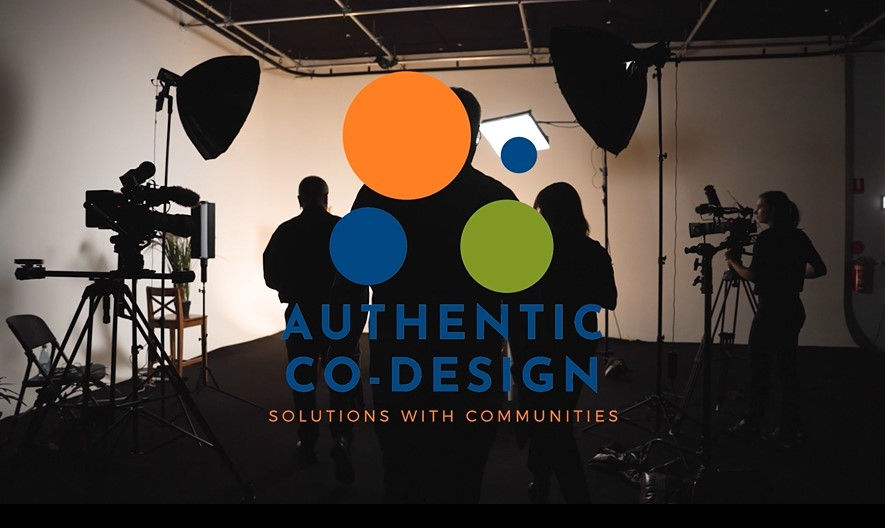Turning around an inauthentic co-design process
- Max Hardy

- May 27, 2020
- 3 min read

What is Co-design? A colleague/friend of mine, Anthony Boxshall, and I had the pleasure of working together on a very challenging project a few years ago. At the time Anthony was working with the EPA, Victoria. It was a co-design project. When I was first approached by the EPA I was asked what I thought co-design actually meant. Apparently, there was no shared view internally about this; and ever since I could confidently say there are many and varied definitions.
I recall a presentation by Ingrid Burkett, Director of Learning and Systems Innovation at the Australian Centre for Social Innovation, where she distinguished between human centred design, design thinking, and participatory design. That was helpful, and when it comes to co-designing solutions to complex issues with communities, we are closest to participatory design.
Recently Anthony Boxshall and I have finished writing a step-by-step manual to Authentic Co-design, specifically relating to complex issues/problems/challenges. Drawing on numerous sources we put forward this fairly straightforward definition:
“Co-design … is a collaborative approach that actively involves all stakeholders (e.g. staff, partners, citizens, customers and end users) in the actual design process, with the aim of ensuring the result meets their needs. In a government or corporation context, co-design can be most simply defined as the act of creating a fit-for-purpose solution or product with stakeholders.”
How do you ensure your co-design process is authentic?
Having a definition is one thing; doing it well, or authentically, is something else again. We outlined five key principles, that for us, help to explain the elements of an authentic process.
But perhaps a better way to highlight what we mean by this is to put forward what an inauthentic process would look like. Sadly, I have seen all of these in practice, and the process has still been loosely referred to as co-design.
Here goes! My tips to guarantee an inauthentic process (and my comments as to how this undermines genuine co-design).
1. Make sure there are so many parameters and constraints that nothing much can be changed or influenced by the process. What I really think? Although those who do this believe this reduces risk, it will actually increase risk, and will discourage people to participating in the process at all. To turn it around, and make it an Authentic Co-design process:
Principle 1 – Make it substantial
2. Only focus attention on those who are the most powerful AND most interested; don’t waste your time with those who are harder to reach, or those you might need to make more effort to engage.
What I really think? This guarantees that you continue to only here from the people you always hear from, and deprives co-design the diversity you need for innovative solutions. To turn it around to make it an Authentic Co-design process.
Principle 2 – Be inclusive
3. Only provide time and space for debating ideas, not for dialogue and deliberation; minimise opportunities for critical thinking and reflection.
What I really think? Reflection, curiosity and mutual learning are needed to appreciate complexity; and are a cornerstone for authentic co-design. To turn it around to make it an Authentic Co-design process:
Principle 3 – Foster mutual learning
4. Share as little information as possible. Hold your cards very close to your chest, thereby making sure you have more information than anyone else. It gives you the edge!
What I really think? Withholding information is often a control game and fuels mistrust. It is seen as a power trip, and often is. Sharing information which is usually withheld is one way of demonstrating an investment in the process, and respect for those invited to participate. To turn it around to make it an Authentic Co-design process:
Principle 4 – Be transparent
5. Ignore legislation, other policies and guidelines up front – so if you can’t implement what has been co-designed you can blame someone else’s red tape.
What I really think? There are always other factors to take into account. Recognise them. Work with them. Try to stretch them if they are too constraining, but sort that out before you invite people into co-designing anything. To turn it around to make it an Authentic Co-design process:
Principle 5 – Be jurisdictionally aware
So, there we have it. My five top tips for guaranteeing a really inauthentic co-design process and five principles to create an authentic process. Applying the principles of co-design can be a challenge, but not applying them will guarantee a predictably poor, if not disastrous, outcome. Trust in the process, and in all participants, will grow as you work together. Importantly, co-designing the process is a great way to lay the foundation for co-designing a solution.
Find out more about our Authentic Co-design Manual, click here. The manual and online course is coming soon to equip you in tackling your next complex project.




Comments